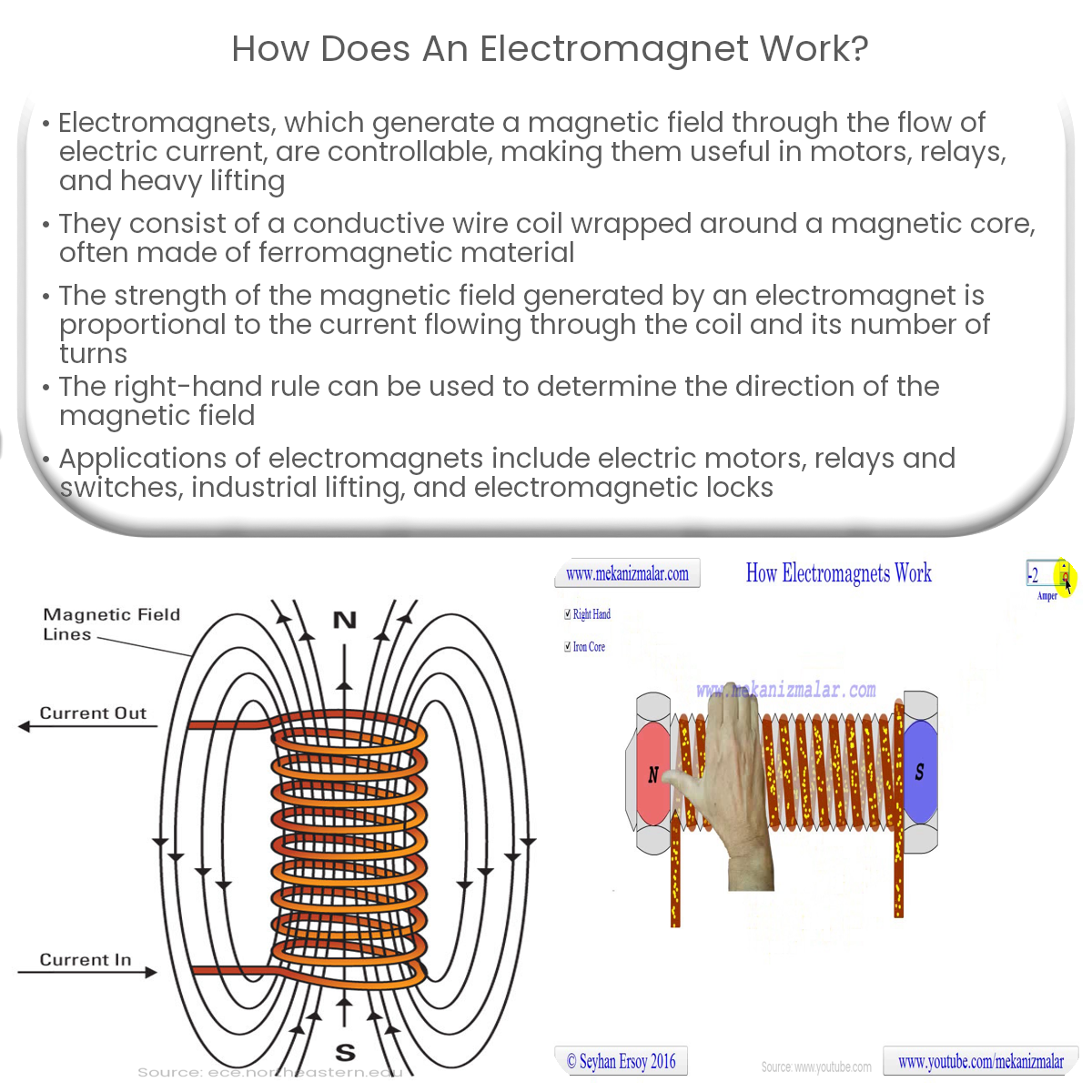An electromagnet works by passing an electric current through a wire coil, creating a magnetic field that is concentrated within a ferromagnetic core.
Understanding Electromagnets
An electromagnet is a type of magnet that generates a magnetic field through the flow of electric current. Unlike permanent magnets, which maintain a constant magnetic field, electromagnets can be turned on and off by controlling the electric current. This makes them particularly useful in various applications, such as motors, relays, and lifting heavy metallic objects.
Components of an Electromagnet
An electromagnet typically consists of two main components: a wire coil and a magnetic core. The wire coil is typically made of a conductive material, such as copper, and is wrapped around the magnetic core. The magnetic core is usually made of a ferromagnetic material, like iron, which enhances the magnetic field produced by the coil.
How Electromagnets Work
The functioning of an electromagnet is based on the principle that electric current flowing through a wire generates a magnetic field around it. When an electric current is passed through the wire coil, it creates a magnetic field that is concentrated within the core. The strength of this magnetic field is proportional to the amount of current flowing through the coil and the number of turns in the coil.
As the current increases, the magnetic field becomes stronger, and vice versa. When the current is turned off, the magnetic field disappears, and the electromagnet loses its magnetic properties. This ability to control the magnetic field by manipulating the electric current is what makes electromagnets versatile and valuable in various applications.
The Right-Hand Rule
To determine the direction of the magnetic field generated by the current flowing through a wire, you can use the right-hand rule. According to this rule, if you wrap your right hand around the wire with your thumb pointing in the direction of the current flow, your fingers will curl in the direction of the magnetic field lines. This rule also applies to the wire coil in an electromagnet.
Applications of Electromagnets
- Electric Motors: Electromagnets are used in electric motors to generate rotational motion. The interaction between the magnetic field of the electromagnet and the permanent magnets creates a force that causes the motor to spin.
- Relays and Switches: In relays, electromagnets are used to control the opening and closing of electrical contacts, allowing for the control of high-voltage or high-current circuits with low-voltage signals.
- Industrial Lifting: Electromagnets are widely used in industrial settings for lifting and moving heavy metallic objects, such as scrap metal or steel beams.
- Electromagnetic Locks: These locks use electromagnets to secure doors, providing a strong and reliable locking mechanism that can be easily controlled electronically.


